How to cite this page Comment citer cette page
Items
has language is exactly
Scotland
-
Annand, David Scottish sculptor
-
Brown, William Kellock Scottish sculptor in the nineteenth and twentieth centuries.
-
Butler, Vincent Scottish sculptor in the twentieth and early twenty-first centuries.
-
Campbell, Thomas Scottish sculptor active in the nineteenth century.
-
Clapperton, Thomas John Scottish sculptor active in the twentieth century.
-
Currie, Andrew Scottish sculptor in the nineteenth century.
-
Davidson, Andrew Scottish sculptor in the nineteenth and twentieth centuries.
-
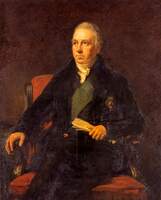 Dundas, Robert, 2nd Viscount Melville British politician in the eighteenth and nineteenth centuries. Dundas was President of the Board of Control (1807-1809; 1809-1812), Chief Secretary for Ireland (1809), and First Lord of the Admiralty (1812-1827; 1828-1830).
Dundas, Robert, 2nd Viscount Melville British politician in the eighteenth and nineteenth centuries. Dundas was President of the Board of Control (1807-1809; 1809-1812), Chief Secretary for Ireland (1809), and First Lord of the Admiralty (1812-1827; 1828-1830). -
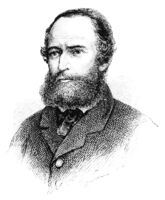 Elder, John Scottish shipbuilder in the nineteenth century. In 1852, John Elder joined the firm of Randolph, Elliott, & Co., which was initially involved in building ship engines before expanding to constructing actual ships from the 1860s. Elder became the sole partner in the company from 1868 and renamed the firm John Elder & Co the following year. His wife Isabella Elder (1828-1905) then briefly took over management of the company upon John's death in 1869. The Elders' shipbuilding firm was actively involved in supporting Britain's naval empire and imperial commerce throughout the nineteenth century. Some of the company's clients included the African Mail Company and the African Steamship Company, the latter of which was absorbed into Elder, Dempster and Co. in 1891.
Elder, John Scottish shipbuilder in the nineteenth century. In 1852, John Elder joined the firm of Randolph, Elliott, & Co., which was initially involved in building ship engines before expanding to constructing actual ships from the 1860s. Elder became the sole partner in the company from 1868 and renamed the firm John Elder & Co the following year. His wife Isabella Elder (1828-1905) then briefly took over management of the company upon John's death in 1869. The Elders' shipbuilding firm was actively involved in supporting Britain's naval empire and imperial commerce throughout the nineteenth century. Some of the company's clients included the African Mail Company and the African Steamship Company, the latter of which was absorbed into Elder, Dempster and Co. in 1891. -
Guest, Hector Scottish sculptor
-
Herriot, Alan Beattie Scottish sculptor
-
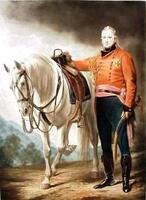 Hope, John, 4th Earl of Hopetoun British Army officer in the eighteenth and early nineteenth centuries. Hope was involved in the suppression of Fédon's rebellion in Grenada in 1796, as well as the British capture of the French and Spanish West Indies. His son John Hope, 5th Earl of Hopetoun (1803-1843) unsuccessfully tried to claim slavery compensation as executor of the Blackness estate in Jamaica.
Hope, John, 4th Earl of Hopetoun British Army officer in the eighteenth and early nineteenth centuries. Hope was involved in the suppression of Fédon's rebellion in Grenada in 1796, as well as the British capture of the French and Spanish West Indies. His son John Hope, 5th Earl of Hopetoun (1803-1843) unsuccessfully tried to claim slavery compensation as executor of the Blackness estate in Jamaica. -
Jackson, Philip Scottish sculptor
-
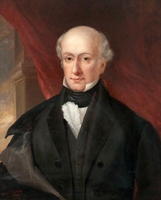 Kinloch, George Scottish slave-owner and politician. Kinloch owned the Grange estate in Jamaica between 1795 and 1803 and was Member of Parliament for Dundee from 1832 to 1833.
Kinloch, George Scottish slave-owner and politician. Kinloch owned the Grange estate in Jamaica between 1795 and 1803 and was Member of Parliament for Dundee from 1832 to 1833. -
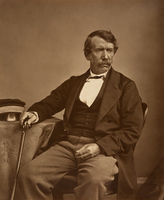 Livingstone, David Scottish colonialist, physician, Christian missionary, and explorer in Africa in the nineteenth century. Livingstone's early life and employment was associated with West Indian slavery. From 1823, he worked in Blantyre Mill, owned by Henry Monteith, who was in a partnership with two Glasgow-West India merchants in the 1810s. Later in life, after several years of experience in Africa, he condemned slave traders, but retained his respect for cotton merchants, who had financed his own education.
Livingstone, David Scottish colonialist, physician, Christian missionary, and explorer in Africa in the nineteenth century. Livingstone's early life and employment was associated with West Indian slavery. From 1823, he worked in Blantyre Mill, owned by Henry Monteith, who was in a partnership with two Glasgow-West India merchants in the 1810s. Later in life, after several years of experience in Africa, he condemned slave traders, but retained his respect for cotton merchants, who had financed his own education. -
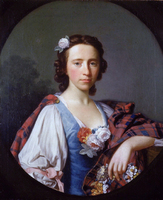 MacDonald, Flora Scottish Jacobite and a plantation-owner in North Carolina in the 1770s. In 1774, Flora and her husband Allan MacDonald (?-1792) emigrated to Montgomery County, North Carolina, where they settled on a plantation at Cheek's Creek. There is a possibility that enslaved Africans worked on their plantation or on nearby estates. Hugh Douglas's 1993 biography refers to the MacDonalds bringing 'eight indentured servants, three women, and five men' with them to their plantation in North Carolina (Douglas, p. 151), but makes no mention of slavery in this period. Primary sources indicate the MacDonald's entanglements with slave-ownership. In an extract from a letter dated December 31st 1777 from Captain Alexander MacDonald to his cousin Allan MacDonald, Alexander asks him to deliver some enslaved African children from his home on Staten Island in New York: 'I wish you would be so Good as to Sende or order to be Sent Some Negro Chielderen that are at my House as their Mothere is Dead, unless you finde matters are like to be Sattled in which case I would let them Stay where they are I again wish we were alltogethere as the more we are in one place the more respectable our appearance wishing you and all ffriends the complments of the Season and with Mrs McDonald's and my kinde wishes for every thing that can make you Hapy & ever I am with Sincerity and truth Dear Cousin' (AmericanRevolution - Letter-Book of Captain Alexander MacDonald of the Royal Highland Emigrants) In 1775, the MacDonald's plantation life was disrupted by the outbreak of the American Revolutionary War. Allan departed to fight on behalf of the Loyalists, while Flora was left in charge of running their plantation. In April 1777, the MacDonalds were evicted from their estate and had their property confiscated. In 1779, Flora MacDonald departed North America for London and later returned to Scotland. There are tentative matches in the Legacies of British Slavery database for a 'Lieut. Col. John McDonald' and an 'Allan McDonald', but the precise family connections have not yet been traced.
MacDonald, Flora Scottish Jacobite and a plantation-owner in North Carolina in the 1770s. In 1774, Flora and her husband Allan MacDonald (?-1792) emigrated to Montgomery County, North Carolina, where they settled on a plantation at Cheek's Creek. There is a possibility that enslaved Africans worked on their plantation or on nearby estates. Hugh Douglas's 1993 biography refers to the MacDonalds bringing 'eight indentured servants, three women, and five men' with them to their plantation in North Carolina (Douglas, p. 151), but makes no mention of slavery in this period. Primary sources indicate the MacDonald's entanglements with slave-ownership. In an extract from a letter dated December 31st 1777 from Captain Alexander MacDonald to his cousin Allan MacDonald, Alexander asks him to deliver some enslaved African children from his home on Staten Island in New York: 'I wish you would be so Good as to Sende or order to be Sent Some Negro Chielderen that are at my House as their Mothere is Dead, unless you finde matters are like to be Sattled in which case I would let them Stay where they are I again wish we were alltogethere as the more we are in one place the more respectable our appearance wishing you and all ffriends the complments of the Season and with Mrs McDonald's and my kinde wishes for every thing that can make you Hapy & ever I am with Sincerity and truth Dear Cousin' (AmericanRevolution - Letter-Book of Captain Alexander MacDonald of the Royal Highland Emigrants) In 1775, the MacDonald's plantation life was disrupted by the outbreak of the American Revolutionary War. Allan departed to fight on behalf of the Loyalists, while Flora was left in charge of running their plantation. In April 1777, the MacDonalds were evicted from their estate and had their property confiscated. In 1779, Flora MacDonald departed North America for London and later returned to Scotland. There are tentative matches in the Legacies of British Slavery database for a 'Lieut. Col. John McDonald' and an 'Allan McDonald', but the precise family connections have not yet been traced. -
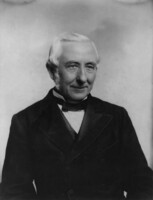 Mackinnon, William Scottish ship-owner and businessman in the nineteenth century. Mackinnon established the British-India Steam Navigation Company and the Imperial British East Africa Company.
Mackinnon, William Scottish ship-owner and businessman in the nineteenth century. Mackinnon established the British-India Steam Navigation Company and the Imperial British East Africa Company. -
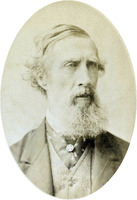 Marshall, William Calder Scottish sculptor in the nineteenth century. Some of his notable colonial works include the statue of Robert Peel in Manchester and the statue of George Grey in Cape Town.
Marshall, William Calder Scottish sculptor in the nineteenth century. Some of his notable colonial works include the statue of Robert Peel in Manchester and the statue of George Grey in Cape Town. -
McBride, Charles Scottish sculptor in the nineteenth and early twentieth centuries.
-
McFall, David Scottish sculptor in the twentieth century.
-
McGill, David Scottish sculptor in the nineteenth and twentieth centuries.
-
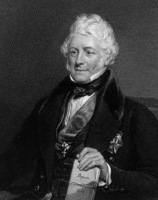 McGrigor, James, 1st Baronet Scottish physician, military surgeon and botanist in the eighteenth and nineteenth centuries. McGrigor was a key figure in the founding of the Royal Army Medical Corps and served as Director-General of the Army Medical Department from 1815 to 1851. The British Empire was involved in a number of colonial conflicts during this period, including the First Ashanti War (1823-1831), the First Anglo-Afghan War (1838-1842) and the Xhosa Wars.
McGrigor, James, 1st Baronet Scottish physician, military surgeon and botanist in the eighteenth and nineteenth centuries. McGrigor was a key figure in the founding of the Royal Army Medical Corps and served as Director-General of the Army Medical Department from 1815 to 1851. The British Empire was involved in a number of colonial conflicts during this period, including the First Ashanti War (1823-1831), the First Anglo-Afghan War (1838-1842) and the Xhosa Wars. -
McMillan, William Scottish sculptor active in the twentieth century. Some of his notable colonial works include the bust of Frederick Craufurd Goodenough in Bloomsbury, the statue of Hugh Trenchard in Westminster, and the statue of King George V in Barrackpore.
-
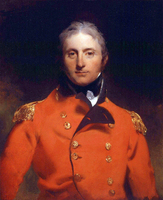 Moore, Lt. Gen. Sir John British Army general in the eighteenth and nineteenth centuries. Moore was involved in consolidating British colonial rule in St. Lucia between 1796 and 1797, having been appointed Commandant and Governor of the island, and helped to re-establish its slave society. Moore also fought to suppress the Irish Rebellion of 1798.
Moore, Lt. Gen. Sir John British Army general in the eighteenth and nineteenth centuries. Moore was involved in consolidating British colonial rule in St. Lucia between 1796 and 1797, having been appointed Commandant and Governor of the island, and helped to re-establish its slave society. Moore also fought to suppress the Irish Rebellion of 1798. -
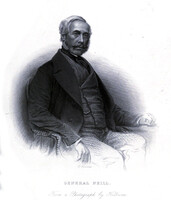 Neill, James George Smith British military officer of the East India Company, who fought in the Second Burmese War (1852-1853), the Crimean War (1853-1856) and the Indian Rebellion of 1857.
Neill, James George Smith British military officer of the East India Company, who fought in the Second Burmese War (1852-1853), the Crimean War (1853-1856) and the Indian Rebellion of 1857. -
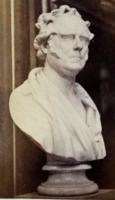 Oswald, James Scottish merchant and politician in the eighteenth and nineteenth centuries. Oswald's wealth firmly derived from the proceeds of transatlantic slavery, both through his own familial network and his commercial interests as a cotton manufacturer. His father, Alexander Oswald (1738-1813), was a 'tobacco lord' in Glasgow, while his cousin, Richard Alexander Oswald (1771-1841), was awarded slavery compensation for the Pemberton Valley estate and Boscabelle Pen in Jamaica. Legacies of British Slavery has possibly linked Oswald himself to further compensation claims in Jamaica, but there is no evidence at present to fully confirm this. As Member of Parliament for Glasgow, Oswald did support Parliamentary moves towards the abolition of slavery in 1834, when he assisted representatives of the pro-slavery Glasgow West India Association on their visit to London, as well as an abolitionist petition calling for an end of the apprenticeship system in the British Caribbean. Oswald's changing position on the question of slavery may have been the result of a shift in his own personal values, but it could equally have been a commercial recognition of the broader shift towards free-trade in Britain.
Oswald, James Scottish merchant and politician in the eighteenth and nineteenth centuries. Oswald's wealth firmly derived from the proceeds of transatlantic slavery, both through his own familial network and his commercial interests as a cotton manufacturer. His father, Alexander Oswald (1738-1813), was a 'tobacco lord' in Glasgow, while his cousin, Richard Alexander Oswald (1771-1841), was awarded slavery compensation for the Pemberton Valley estate and Boscabelle Pen in Jamaica. Legacies of British Slavery has possibly linked Oswald himself to further compensation claims in Jamaica, but there is no evidence at present to fully confirm this. As Member of Parliament for Glasgow, Oswald did support Parliamentary moves towards the abolition of slavery in 1834, when he assisted representatives of the pro-slavery Glasgow West India Association on their visit to London, as well as an abolitionist petition calling for an end of the apprenticeship system in the British Caribbean. Oswald's changing position on the question of slavery may have been the result of a shift in his own personal values, but it could equally have been a commercial recognition of the broader shift towards free-trade in Britain. -
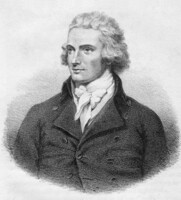 Park, Mungo Scottish explorer in West Africa in the late eighteenth and early nineteenth century. During his two expeditions to the continent (1795-1797; 1805), Park actively used enslaved people to aid his explorations. During his life, Park briefly worked as a ship surgeon. In 1793, Park worked onboard the East India Company ship 'Worcester' travelling to Bengkulu in Indonesia. In 1797, Park again worked as a ship surgeon, this time onboard a slave trade ship named 'Charleston' travelling from West Africa to Charleston, South Carolina [Voyage ID 25406, Slave Voyages database]. The voyage across the Middle Passage was disrupted and the ship was eventually forced to land in Antigua. A total of 129 enslaved people were held in captivity on board the ship and 11 died during the voyage. As Secretary of the African Association, Bryan Edwards, a major slave-owner in Jamaica and pro-slavery politician, helped to edit and publish Park's narrative of his 1795-1797 expedition.
Park, Mungo Scottish explorer in West Africa in the late eighteenth and early nineteenth century. During his two expeditions to the continent (1795-1797; 1805), Park actively used enslaved people to aid his explorations. During his life, Park briefly worked as a ship surgeon. In 1793, Park worked onboard the East India Company ship 'Worcester' travelling to Bengkulu in Indonesia. In 1797, Park again worked as a ship surgeon, this time onboard a slave trade ship named 'Charleston' travelling from West Africa to Charleston, South Carolina [Voyage ID 25406, Slave Voyages database]. The voyage across the Middle Passage was disrupted and the ship was eventually forced to land in Antigua. A total of 129 enslaved people were held in captivity on board the ship and 11 died during the voyage. As Secretary of the African Association, Bryan Edwards, a major slave-owner in Jamaica and pro-slavery politician, helped to edit and publish Park's narrative of his 1795-1797 expedition. -
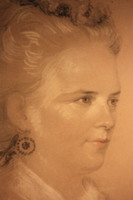 Robertson-Hill, Amelia Scottish sculptor active in the nineteenth century.
Robertson-Hill, Amelia Scottish sculptor active in the nineteenth century. -
Shannan, Archibald McFarlane Scottish sculptor in the nineteenth and twentieth centuries.
-
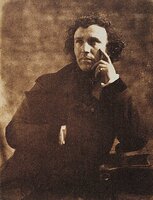 Steell, John Scottish sculptor in the nineteenth century. Some of his notable colonial works include a statue of George Kinloch in Dundee, a statue of James Andrew Broun Ramsay, 1st Marquess of Dalhousie in the Victoria Memorial Hall, Kolkata, and a statue of James Wilson, which was originally installed in Kolkata but was later repatriated to London in 1960.
Steell, John Scottish sculptor in the nineteenth century. Some of his notable colonial works include a statue of George Kinloch in Dundee, a statue of James Andrew Broun Ramsay, 1st Marquess of Dalhousie in the Victoria Memorial Hall, Kolkata, and a statue of James Wilson, which was originally installed in Kolkata but was later repatriated to London in 1960. -
Stevenson, David Watson Scottish sculptor in the nineteenth and early twentieth centuries.
-
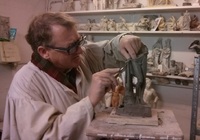 Stoddart, Alexander Scottish sculptor active in the twentieth and twenty-first centuries.
Stoddart, Alexander Scottish sculptor active in the twentieth and twenty-first centuries. -
Stuart Burnett, Thomas Scottish sculptor in the nineteenth century
-
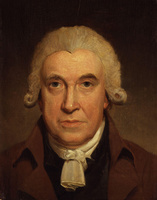 Watt, James British inventor, engineer, and mercantile agent in the eighteenth and nineteenth centuries. Watt came from a family with close ties to transatlantic commerce and occasionally slave-trading. His father, James Watt senior (1698-1782) was a transatlantic merchant in Greenock who traded in sugar and tobacco with North America and the Caribbean, while his brother John "Jockey" Watt (1739-1762) became involved in slave-trading. In 1762, Watt became involved in slave-trafficking when he took responsibility for an enslaved boy named Frederick from his brother Jockey. Watt possibly became involved in delivering the child to the Glasgow merchant John Warrand, but it seems Frederick was able to run away and escape the affair. Watt also supplied steam engines to the Caribbean in the early nineteenth century, which were used on enslaved labour plantations. According to Jennifer Tann, the Boulton & Watt firm exported a total of 129 engines to the Caribbean between 1803 and 1833. For more information on the relationship between James Watt and slavery, please refer to the research carried out by the historian Stephen Mullen.
Watt, James British inventor, engineer, and mercantile agent in the eighteenth and nineteenth centuries. Watt came from a family with close ties to transatlantic commerce and occasionally slave-trading. His father, James Watt senior (1698-1782) was a transatlantic merchant in Greenock who traded in sugar and tobacco with North America and the Caribbean, while his brother John "Jockey" Watt (1739-1762) became involved in slave-trading. In 1762, Watt became involved in slave-trafficking when he took responsibility for an enslaved boy named Frederick from his brother Jockey. Watt possibly became involved in delivering the child to the Glasgow merchant John Warrand, but it seems Frederick was able to run away and escape the affair. Watt also supplied steam engines to the Caribbean in the early nineteenth century, which were used on enslaved labour plantations. According to Jennifer Tann, the Boulton & Watt firm exported a total of 129 engines to the Caribbean between 1803 and 1833. For more information on the relationship between James Watt and slavery, please refer to the research carried out by the historian Stephen Mullen. -
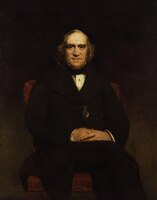 Wilson, James Scottish colonial businessman, economist and politician in the nineteenth century. Wilson was the founder of The Economist weekly newspaper, as well as Chartered Bank of India, Australia and China (today Standard Chartered). He was Financial Secretary to the Treasury between 1853 and 1858, and was briefly Paymaster General and Vice-President of the Board of Trade (1858) and Finance Member, Viceroy's Executive Council (1859-1860) after being sent out to India in the wake of the Indian Rebellion.
Wilson, James Scottish colonial businessman, economist and politician in the nineteenth century. Wilson was the founder of The Economist weekly newspaper, as well as Chartered Bank of India, Australia and China (today Standard Chartered). He was Financial Secretary to the Treasury between 1853 and 1858, and was briefly Paymaster General and Vice-President of the Board of Trade (1858) and Finance Member, Viceroy's Executive Council (1859-1860) after being sent out to India in the wake of the Indian Rebellion.